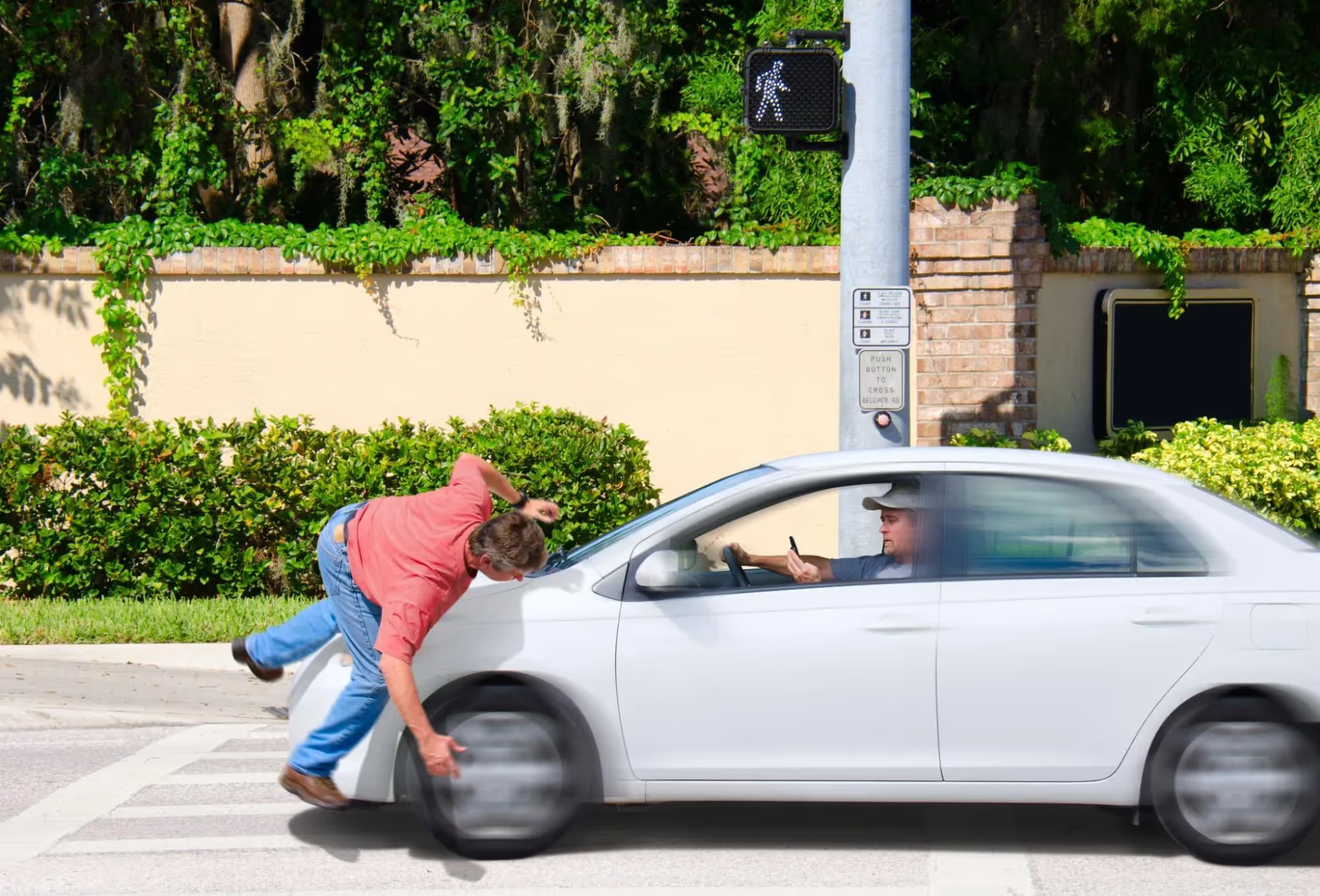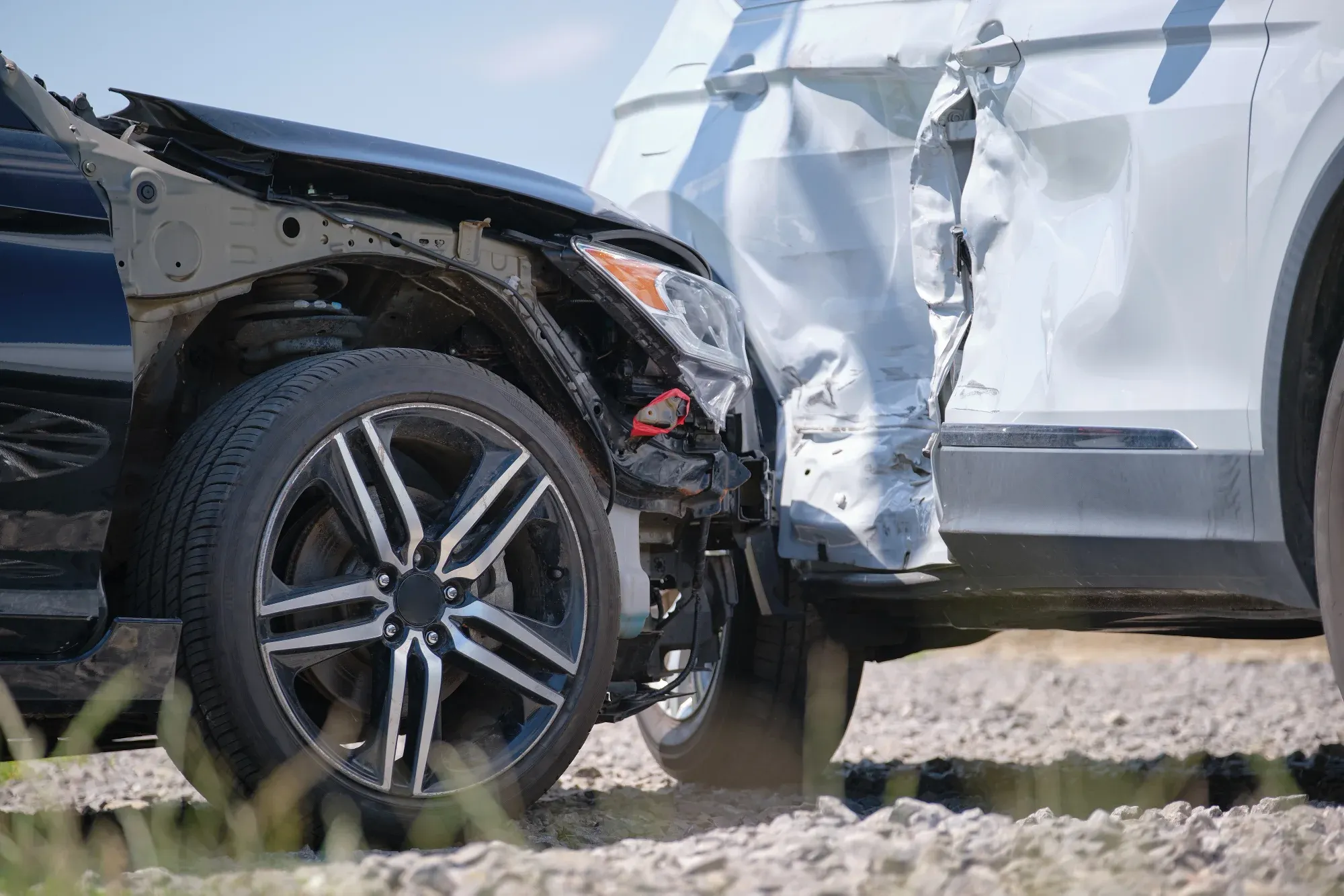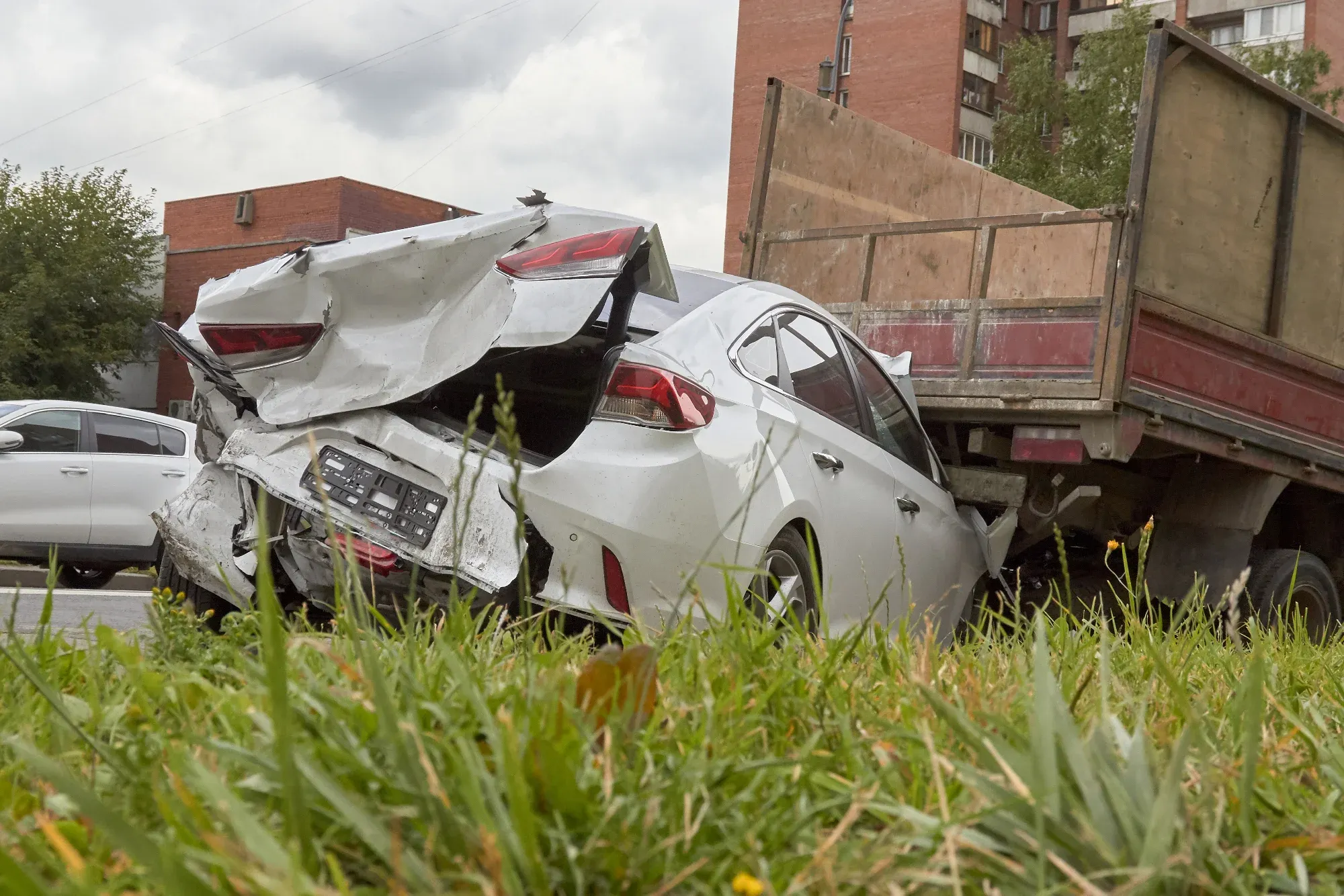table of contents
When a pedestrian is hit by a car in California, injury claims can result in widely varying settlement amounts. Many victims want to know the average payout for pedestrian hit by car in California, but the reality is that pedestrian accident settlements depend on numerous factors.
Every case is unique – a minor injury case might settle for only a few thousand dollars, whereas a catastrophic injury case could reach six or even seven figures in compensation. In fact, when the driver is clearly at fault, many pedestrian car accident settlements in California fall in the five- or low six-figure range (often roughly $70,000–$175,000), and in severe cases they can exceed half a million.
At the same time, extraordinary cases involving permanent disabilities or wrongful death have resulted in multi-million dollar outcomes. Because settlements are usually private and each accident’s circumstances differ, there is no single “standard” or average compensation for being hit by a car. Instead, understanding the key elements that determine pedestrian injury settlements will give a better idea of what a claim may be worth.
Key elements in calculating pedestrian injury settlements
Several core elements go into calculating the value of a pedestrian injury settlement. Primarily, the compensation is driven by the damages the injured pedestrian suffers. These damages are broken into economic and non-economic categories.
Economic damages cover concrete financial losses like medical expenses and lost wages, while non-economic damages compensate for subjective losses like pain, suffering, and loss of quality of life. We discuss each in more detail below.
Keep in mind that factors such as the severity of injuries, length of recovery, and any long-term impacts will heavily influence both types of damages. For instance, a pedestrian with a long hospital stay and permanent disability will have much higher damages (and thus a higher potential settlement) than someone who thankfully sustains only minor scrapes. Ultimately, the extent of the harm and losses suffered by the victim forms the foundation of any settlement calculation.
Medical expenses and lost wages in pedestrian injury claims
Economic damages are often the starting point for valuing a pedestrian injury claim. These include all medical expenses incurred due to the accident, from emergency room bills and hospital stays to surgery costs, medication, rehabilitation, and any needed future medical care. Pedestrians hit by cars frequently sustain serious injuries – broken bones, head trauma, spinal injuries, internal injuries – that can lead to substantial treatment costs.
For example, a severe head injury like a traumatic brain injury (TBI) settlement must account for long-term care such as cognitive therapy and assisted living. One study estimated that lifetime treatment for a traumatic brain injury can range from $85,000 up to $3,000,000, illustrating how medical costs can drive a settlement into high figures. In addition to medical bills, victims can claim lost wages for the income they miss during recovery, as well as projected future lost earnings if the injuries cause lasting disability or limit the ability to work.
For instance, if a pedestrian cannot work for months or can only work in a reduced capacity going forward, the settlement should include compensation for that lost earning capacity. Economic damages are usually documented through bills, receipts, and wage statements, making them relatively straightforward to calculate.
However, they are only part of the picture – non-economic losses often significantly increase the value of pedestrian injury settlements when injuries are severe.
Non-economic damages (pain and suffering)
Not all consequences of an accident come with a bill or price tag. Non-economic damages compensate a pedestrian for the real but intangible losses suffered. This includes physical pain, emotional anguish, trauma, and loss of enjoyment of life following the accident. California law allows injured victims to recover substantial amounts for these subjective losses, often referred to broadly as pain and suffering damages.
For example, a pedestrian who endures chronic pain, scarring, or psychological trauma (such as anxiety about walking near traffic) can seek compensation for these harms. There is no fixed formula in California for calculating pain and suffering, but commonly insurers and courts may use a “multiplier” of the economic damages or a per diem amount. The more severe and long-lasting the injury and its effects, the higher the non-economic damage award is likely to be.
Unlike some states, California generally does not cap pain and suffering in auto accident cases, so this component can greatly increase the settlement value for serious injuries. It’s not uncommon for the non-economic portion of a settlement to equal or exceed the medical costs in cases of life-altering injuries. In short, pain and suffering damages recognize that a pedestrian accident impacts more than the wallet – it affects quality of life.
(For a detailed look at how pain and suffering is calculated, see our guide on calculating pain and suffering in California.)
Common settlement ranges for pedestrian car accidents in California
So what ranges are typical for pedestrian car accident settlements in California? While every case varies, we can highlight some common patterns. Minor injury cases (e.g. bruises, mild sprains, no hospitalization) often resolve in the low five-figure range, roughly $10,000 to $50,000.
Settlements for moderate injuries – for example, a broken bone or a concussion with a few weeks of recovery – might fall around $50,000 to $150,000 depending on medical bills and time off work.
When a pedestrian suffers severe injuries (such as multiple fractures, significant surgery, or a long-term impairment), settlements can easily reach six figures and often range from $150,000 up to $1 million or more.
In cases of permanent disability, spinal cord injury, or fatal incidents, seven-figure payouts are possible, especially if the at-fault party has substantial insurance or assets. In fact, there have been California settlements and verdicts in the millions for pedestrians – for instance, a case involving serious brain and knee injuries settled for $1.5 million, and another involving a traumatic brain injury settled for $9 million.
Catastrophic harm like a TBI or paralysis often justifies these higher amounts because of lifelong care needs and suffering. It’s important to note that outliers will raise the “average” settlement figure, while many routine cases settle for more modest sums.
One analysis of recent cases found a mean settlement around $67,000 but a median of about $30,000 – indicating that a few very large cases drive the average up, while the typical pedestrian case might be in the tens of thousands.
Ultimately, any insurance coverage for pedestrian accidents plays a big role in these ranges as well. If a driver only carries minimal insurance, it can cap the available payout (more on that below). Still, as a broad state-wide overview, California pedestrian accident settlements commonly span anywhere from a few thousand dollars for minor incidents up to hundreds of thousands (or more) for serious injuries.
Settlements tend to be higher on average in pedestrian accidents than in ordinary car-on-car crashes, because a person on foot is so exposed and thus more likely to sustain severe injuries.
California also has a high incidence of pedestrian accidents – over 40,000 pedestrians were injured in one recent year – which has led to a significant number of high-value claims in the state.
Legal Considerations in Pedestrian Accident Cases
Beyond the raw numbers, there are important legal factors that affect pedestrian injury claims in California. First, fault and negligence determinations are critical. California law gives pedestrians strong rights of way: under Vehicle Code §21950, a driver must yield to pedestrians crossing in a marked or unmarked crosswalk. If a driver strikes a pedestrian who is lawfully crossing, that driver has likely violated their duty of care and can be deemed negligent per se.
However, pedestrians also have responsibilities – the same statute instructs pedestrians not to suddenly step off the curb into traffic or stop in the roadway in an unsafe manner. This mutual duty means fault isn’t always entirely on the driver; sometimes a pedestrian may share some blame (for instance, if they were jaywalking or crossing against a light). California follows pure comparative negligence in California. This rule allows an injured pedestrian to recover damages even if they were partly at fault, but their percentage of fault reduces their compensation.
In practice, that means if a pedestrian was, say, 25% responsible for the accident (perhaps not using a crosswalk), their settlement would likely be reduced by 25%. Even a pedestrian who is 75% at fault could still recover the remaining 25% of their damages under this system.
Comparative negligence ensures no injured person is completely barred from recovery due to partial blame, but it certainly influences the payout – insurance companies will aggressively argue the pedestrian was negligent to minimize the claim. Another key legal consideration is the insurance and assets of the at-fault driver.
California law now requires drivers to carry at least $30,000 in liability insurance per person injured (and $60,000 per accident). (Prior to 2025, the minimum was $15,000 per person, which often proved woefully insufficient for serious injuries.)
If the driver who hit you has only a minimum policy, that $30,000 (or $15,000 under older policies) may be the maximum the insurer will pay – regardless of how high your medical bills are. In cases where the driver has low coverage, your lawyer may need to explore other avenues: for example, tapping into your own underinsured motorist coverage, or pursuing the driver’s personal assets if feasible.
On the other hand, if the driver has a high-limit policy or was driving for work (and thus covered by a commercial policy), there is more insurance money available, which often correlates with a higher settlement potential.
Always remember that insurance companies will try to settle for as little as possible; having strong evidence of fault and extensive documentation of damages is crucial to push for a fair amount. Several other laws and deadlines can impact a pedestrian accident case. California’s statute of limitations for personal injury is generally two years from the date of the accident. Missing this deadline means losing the right to sue for damages. (If a government vehicle or agency was involved – for example, a city bus hit the pedestrian – a special claim notice usually must be filed within 6 months, which is a critical exception.)
Additionally, if the driver’s actions were egregious (such as drunk driving or a hit-and-run), there may be criminal charges or punitive damages considerations, but those are separate from the basic injury settlement and relatively rare. In summary, evaluating a pedestrian accident claim in California requires not only adding up bills and receipts, but also navigating comparative fault rules, insurance limitations, and legal timeframes.
An experienced attorney can analyze these factors to determine how they affect the value and viability of your claim.
How to protect your rights after a pedestrian accident
If you or a loved one is struck by a vehicle while on foot, it’s vital to take steps that protect your health and legal rights. Here are some key actions to consider after a pedestrian accident:
- Your top priority should be your health. Call 911 and get treated for any injuries, even if they seem minor at first. Prompt treatment not only ensures your well-being but also creates medical records that link your injuries to the accident.
- Having an official accident report will be important for any future claim. Explain to the officers exactly what happened from your perspective. The police report will document details like the location, time, parties involved, and any initial determination of fault or citations issued. This can serve as valuable evidence later on. If the driver fled (hit-and-run), give law enforcement as much information as you can (vehicle description, direction, etc.).
- If you are able, try to collect information while still at the accident scene. Get the driver’s name, contact, insurance details, and license plate number. Take photos of the scene, the vehicle, your injuries, skid marks, and any traffic signals or crosswalks. Ask witnesses for their contact information or recorded statements, since their testimony might be crucial in establishing what happened. All this evidence can greatly strengthen your case when dealing with insurance adjusters or in court.
- You (or your attorney) should promptly inform the driver’s insurance company of the incident and begin the claims process. If you have your own auto insurance with pedestrian coverage or medical payments coverage, notify your insurer as well. Do not admit fault when speaking about the accident. It’s wise to avoid giving any recorded statement to the at-fault driver’s insurer before consulting legal counsel. Insurance adjusters may attempt to get you to downplay your injuries or accept a quick, low settlement. Refer any complex questions to your attorney to avoid jeopardizing your claim.
- Finally, consider reaching out to a lawyer who specializes in pedestrian injury cases. A California pedestrian injury lawyers will understand the nuances of comparative fault, know how to deal with insurance companies, and fight for the full compensation you deserve.
The California pedestrian accident attorneys at Kermani LLP, for example, can evaluate your case in a free consultation. An attorney will help gather evidence (such as traffic camera footage or expert analyses), handle all communications with insurers, and, if necessary, file a lawsuit to ensure your rights are protected. With legal guidance, you significantly improve your chances of securing a fair settlement that accounts for all of your damages – from medical expenses and lost wages to your pain and suffering.
By following these steps, you will be in a strong position to pursue your claim and maximize the recovery after a pedestrian accident. California law is on your side as an injured pedestrian, but it’s up to you (and your legal team) to assemble the proof and advocate for the compensation you need to rebuild your life. Each case may vary, but understanding the factors behind settlement values and taking proactive measures will help you achieve the best possible outcome in your pedestrian injury claim.
Discover your legal options. Get a free case review, and pay nothing unless we win.
Receive a FREE case assessment
Every case is unique, so we tailor our approach to meet your specific needs.











